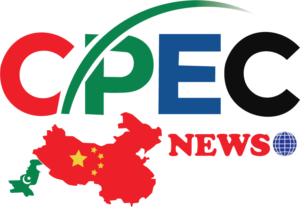As of June 23, the 9th China-South Asia Expo has resulted in the signing of 163 trade agreements, representing a total contract value of 8.663 billion yuan. The Yunnan Provincial Department of Commerce detailed that this comprises 150 formal agreements valued at 8.3 billion yuan, 12 letters of intent amounting to 213 million yuan, and one framework procurement agreement worth 150 million yuan.
Professor Lin Minwang, Vice Dean of the Institute of International Studies at Fudan University, commented on the broader context: “China and South Asian countries share a common vision for the future and the world. We all hope for a stable international order and resilient supply chains. Presently, both sides are working toward deeper interconnection. In today’s turbulent global landscape, our shared interests are growing. China possesses strength in industrialization, while many South Asian countries excel in agriculture. This complementarity creates significant potential for future economic cooperation.”
Xu Bu, member of the UN Secretary-General’s High-Level Advisory Board on Effective Multilateralism and President of the Institute of Global Development and Security at Jiangsu University, offered further perspective: “When we discuss multilateralism today, it’s regrettable that the global system is not functioning as effectively as it should. However, multilateral cooperation in the Asia-Pacific region is advancing rapidly. China’s partnerships with both South and Southeast Asian nations are reinforcing regional multilateral frameworks that benefit all parties. The China-South Asia Expo is a crucial platform supporting this progress. It has facilitated substantial economic cooperation—extending beyond China and South Asia to include Southeast Asia. For instance, China’s bilateral trade with Pakistan has surpassed $23 billion, and with India, exceeds $150 billion. Regional economic cooperation is on a constructive path, but we must not take it for granted. Continuous efforts are required to safeguard and sustain cooperation—whether in economics, security, or politics.”
Amid a global realignment of trade, regional cooperation is emerging as a key strategy for navigating uncertainty and fostering shared prosperity. China’s deepening ties with South and Southeast Asian nations have gained significant momentum in this context. Events like the China-South Asia Expo are actively contributing to the integration of regional supply chains and the enhancement of market connectivity.
Zhou Mi, a researcher at the Chinese Academy of International Trade and Economic Cooperation, underscored Asia’s distinct advantages: a combined consumer market of 2.8 billion people, representing immense potential, and robust institutional frameworks such as the Regional Comprehensive Economic Partnership (RCEP). “These factors,” he stated, “create ideal conditions for building a more cohesive regional economic community.” He elaborated: “In my assessment, regional collaboration presents a powerful package for long-term development. Consider North America—NAFTA, established in 1994—it leveraged the developmental differences between the U.S., Canada, and Mexico to foster vertical supply chain integration. Similarly, China, Southeast Asia, and South Asia, with their vast populations and diverse development stages, offer immense opportunities. The RCEP negotiations commenced in November 2012, led by ASEAN and initially involving its six existing FTA partners. We aim to further strengthen these mechanisms, ensuring collaboration rests on mutual commitments. These commitments can shape expectations and establish the foundation for a new, globally significant platform for cooperation and development.”














